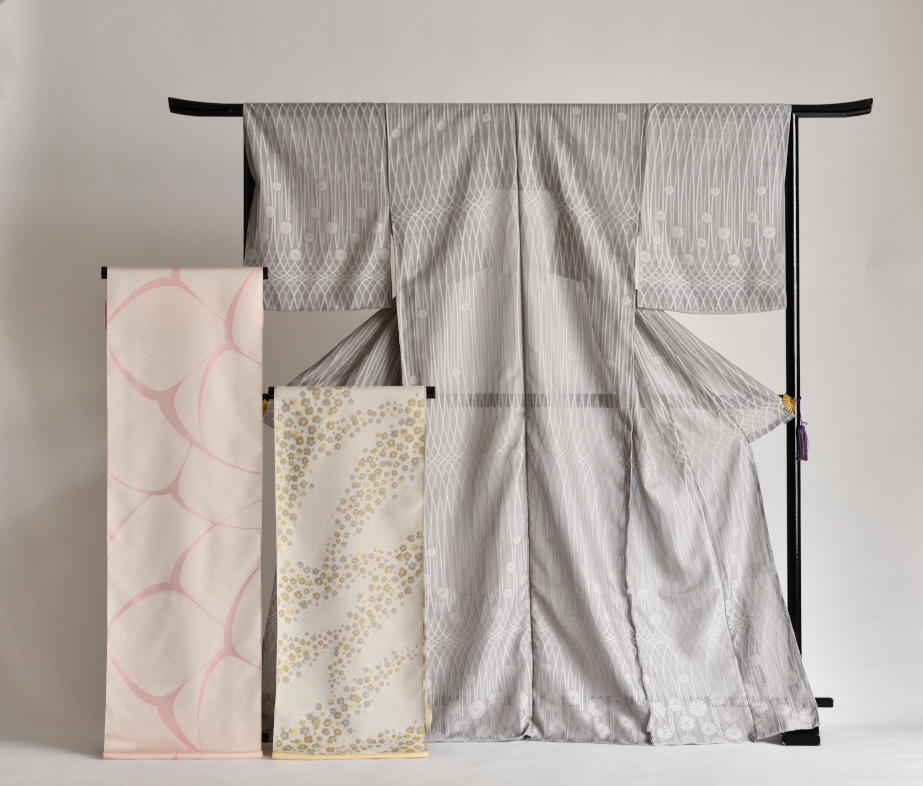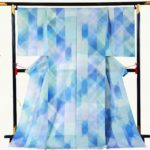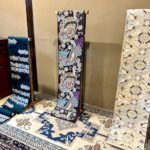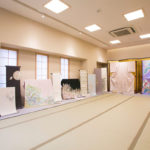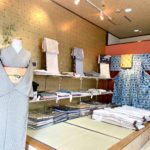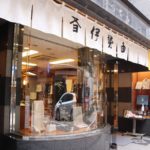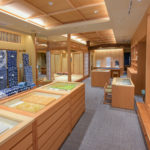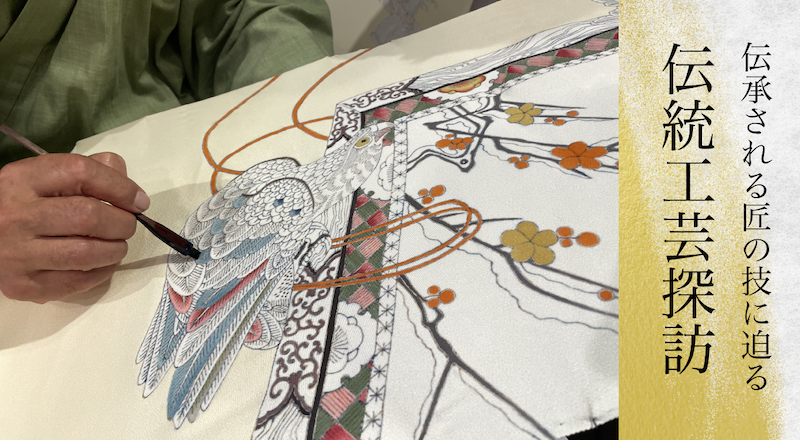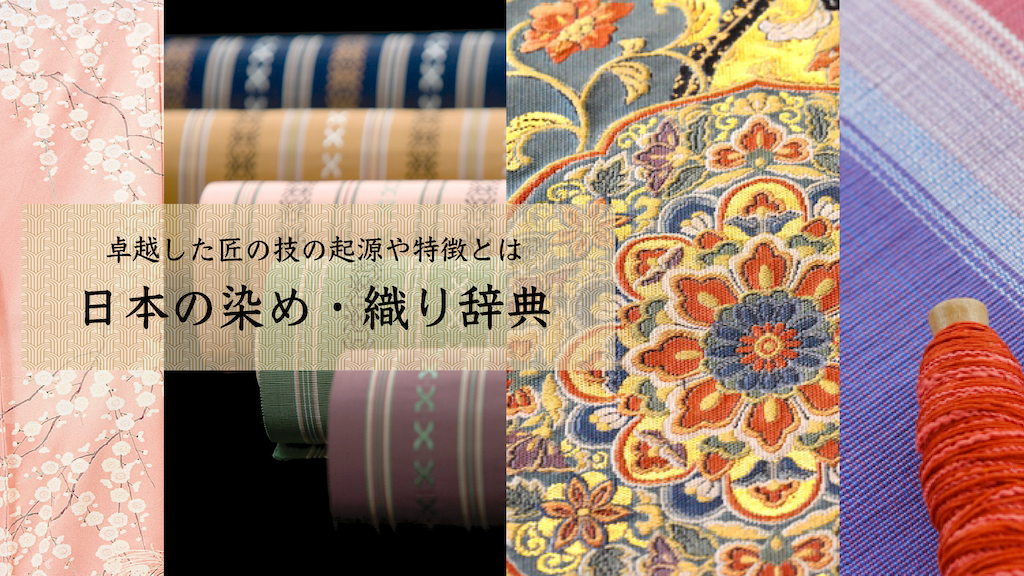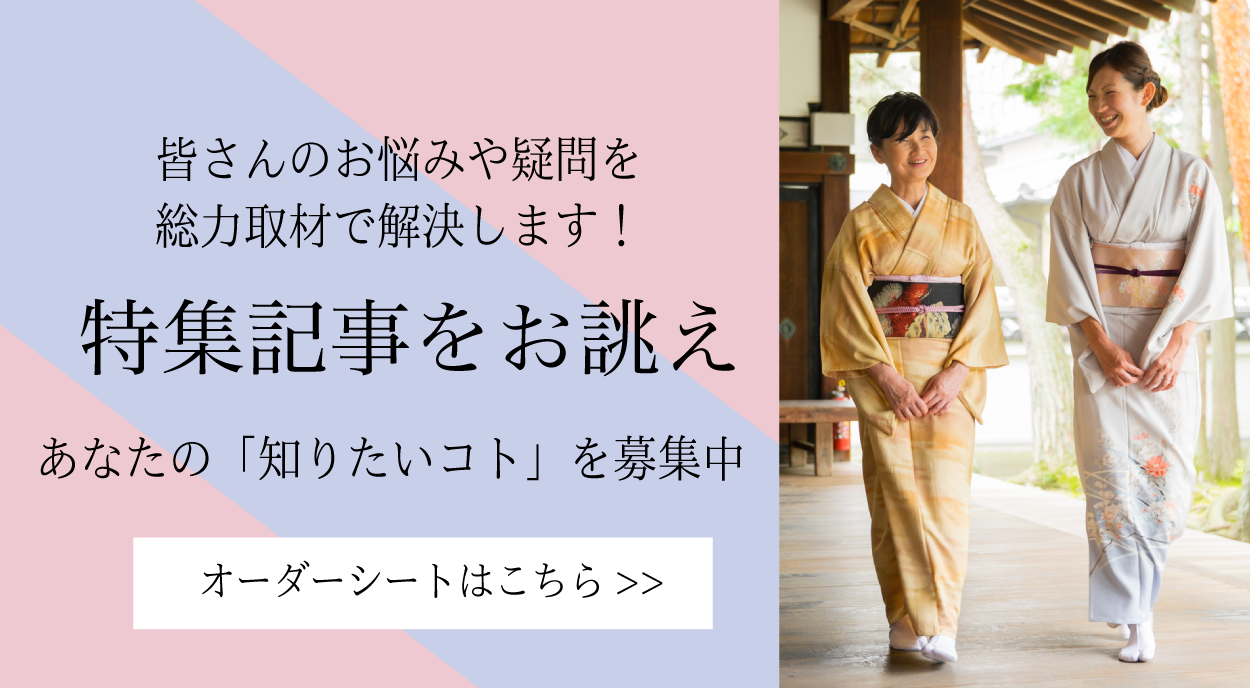西陣織
Pronunciation: Nishijin-ori
Production area: Nishijin district, Kyoto City, Kyoto Prefecture
Nishijin-ori is one of Japan’s most renowned silk textiles, produced in the Nishijin district of Kyoto City. The term “Nishijin” refers to the northwestern area of Kyoto (Kamigyo and Kita wards), which has a history spanning over 1,000 years. Its origins trace back to the 5th–6th centuries, when the Hata clan introduced sericulture and silk weaving techniques. During the Onin War (1467–1477), displaced weavers resumed production in the area where the western army had camped, giving rise to the name “Nishijin.” Nishijin-ori is woven from pre-dyed yarns (sakizome), with complex patterns incorporated directly into the weave. This requires numerous processes before completion. Its elegant, richly decorative style makes it especially prized for formal Obi (sashes). Compared to general post-dyeing methods, Nishijin-ori is more durable and resistant to wrinkling. While Obi are the most famous products, Nishijin-ori also includes a wide range of textiles such as Tsumugi, Omeshi, Tsuzure, Kara-ori, Ra, Nishiki, Donsu, Kinran, and even fabrics for kimono lengths and Buddhist robes.
See Also: The Masterpiece of Beauty Vol.2 — “Obiya Sutematsu” | Kyoto」
See Also: The Masterpiece of Beauty Vol.4 — “Shinryu-sha” | Kyoto
See Also: The Masterpiece of Beauty Vol.6 — "Nishijin Maizuru" | Kyoto
Types of Nishijin-ori
・Tsuzure (綴)
Derived from plain weave, Tsuzure is created by weaving patterns with dense weft yarns, three to five times thicker than the warp, wrapping around the warp threads.
・Tatenishiki (経錦)
Patterns are produced with warp threads. For example, in a three-color design, sets of three warp threads alternate between front and back, forming both the ground and patterns.
・Nukinishiki (緯錦)
A general term for textiles woven with a variety of colorful weft threads, considered among the most ornate of Nishijin fabrics.
・Donsu (緞子)
Based on satin weave (shusu-ori), typically using a five-harness satin structure. Warp and weft arrangements form both ground and motifs, creating a glossy surface.
・Shuchin (朱珍)
Also written 繻珍, this is a warp-satin ground fabric decorated with raised patterns using gold, silver, or multiple colored threads.
・Shoha (紹巴)
Originally used as fabric for tea utensils, this weave employs tightly twisted warp and weft yarns, producing fine horizontal herringbone or chevron patterns.
・Futsū (風通)
A multilayered weave, with double or triple structures instead of a single layer. The name “futsū” means “air flowing through,” as the fabric allows space between layers.
・Mojiri-ori (綟り織)
Warp threads twist around each other, creating an openwork appearance similar to knitting. When woven, the twisted warps leave small gaps between weft threads. Sha (紗) results when only the twisted weave is used, while Ro (絽) combines Sha with plain weave.
・Honshibo-ori (本しぼ織り)
Both warp and weft are degummed silk threads. The weft, known as Omeshi-hiki, is specially twisted while still moist with starch, giving a distinctive crepe-like surface texture.
・Velvet (ビロード)
Nishijin velvet incorporates weft-inserted wires to create raised pile or loops (wana). After weaving, the warp is cut or the wires are removed to form the pile surface.
・Kasuri-ori (絣織)
Ikat technique where warp and weft threads are resist-dyed before weaving, forming patterns with characteristic blurred edges.
・Tsumugi (紬)
A plain weave textile using handspun yarns of floss silk (mawata), woven by hand into kasuri, striped, or plain fabrics. It is classified as a pre-dyed (sakizome) silk fabric.
